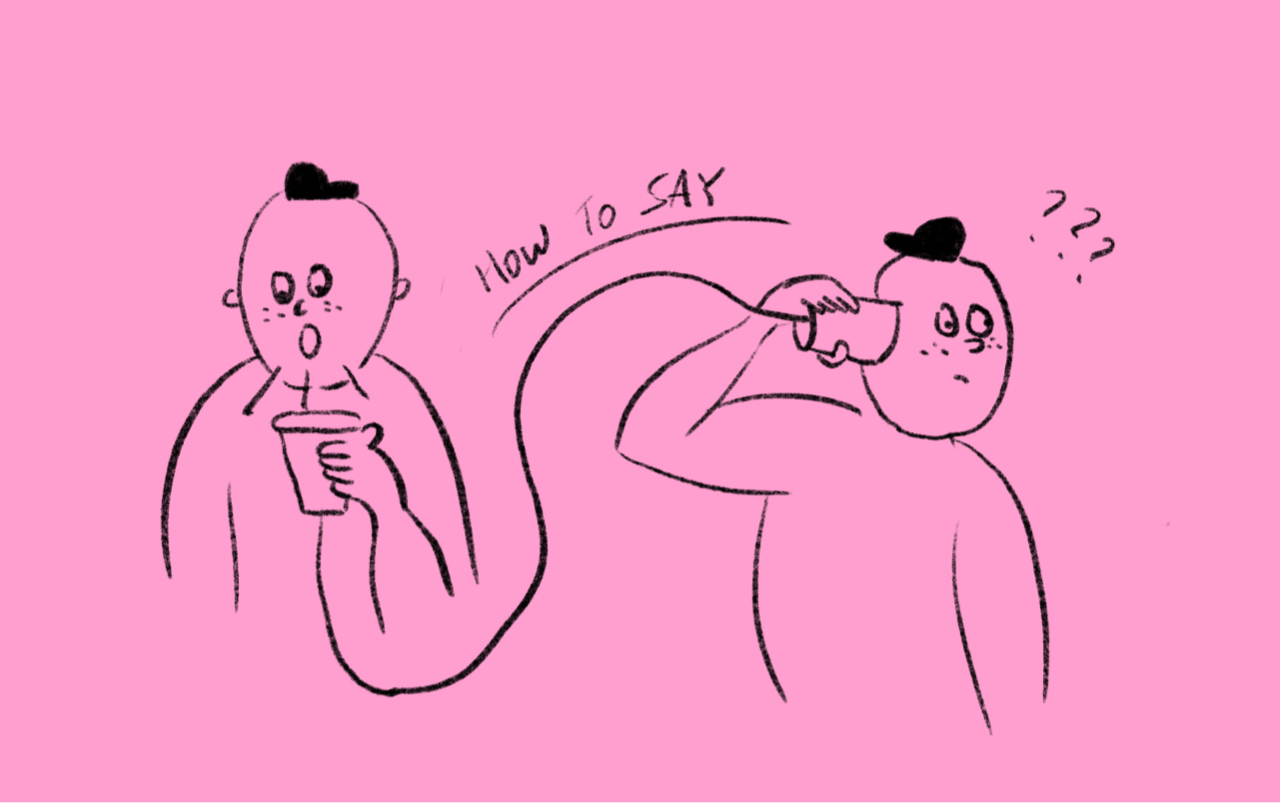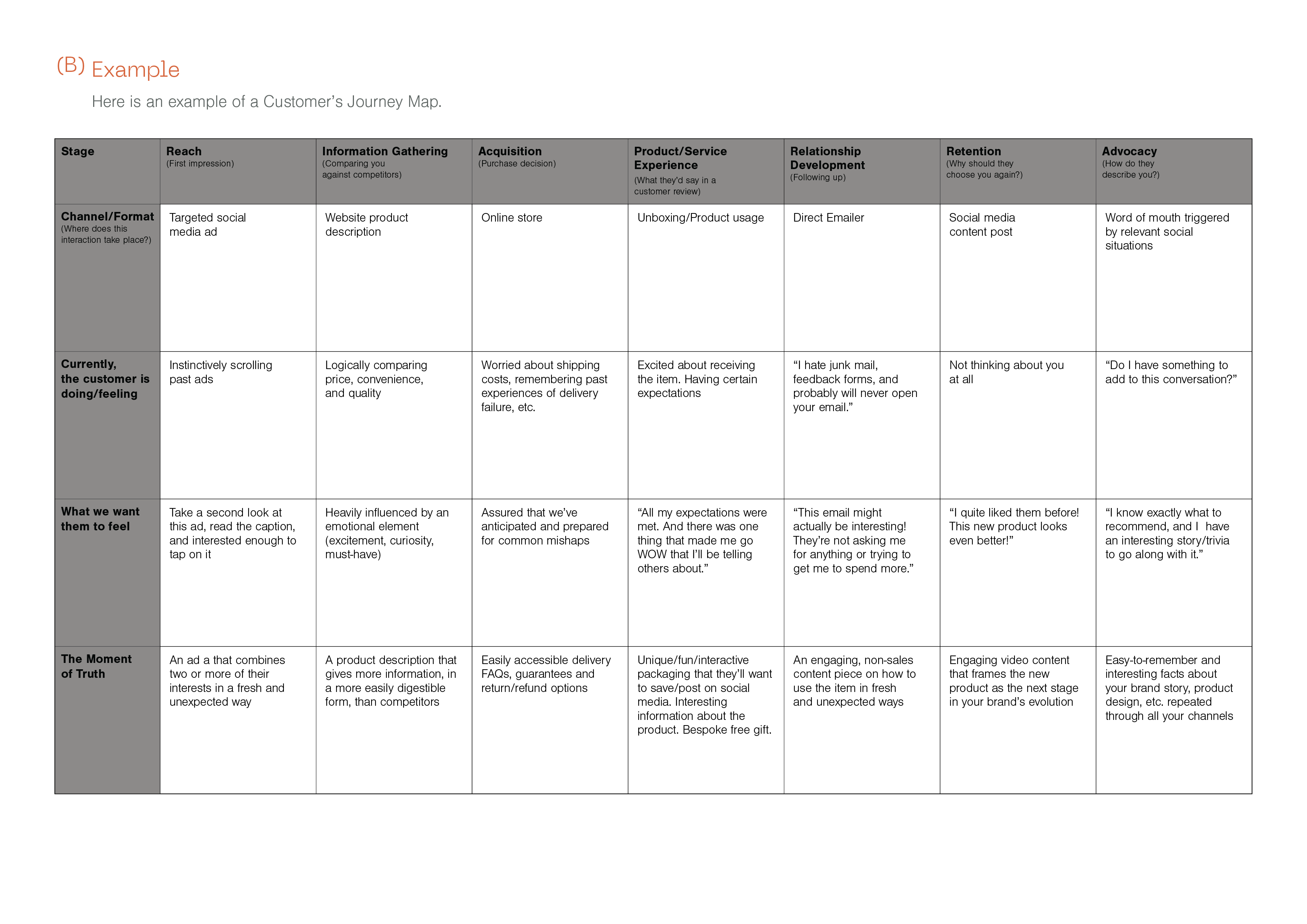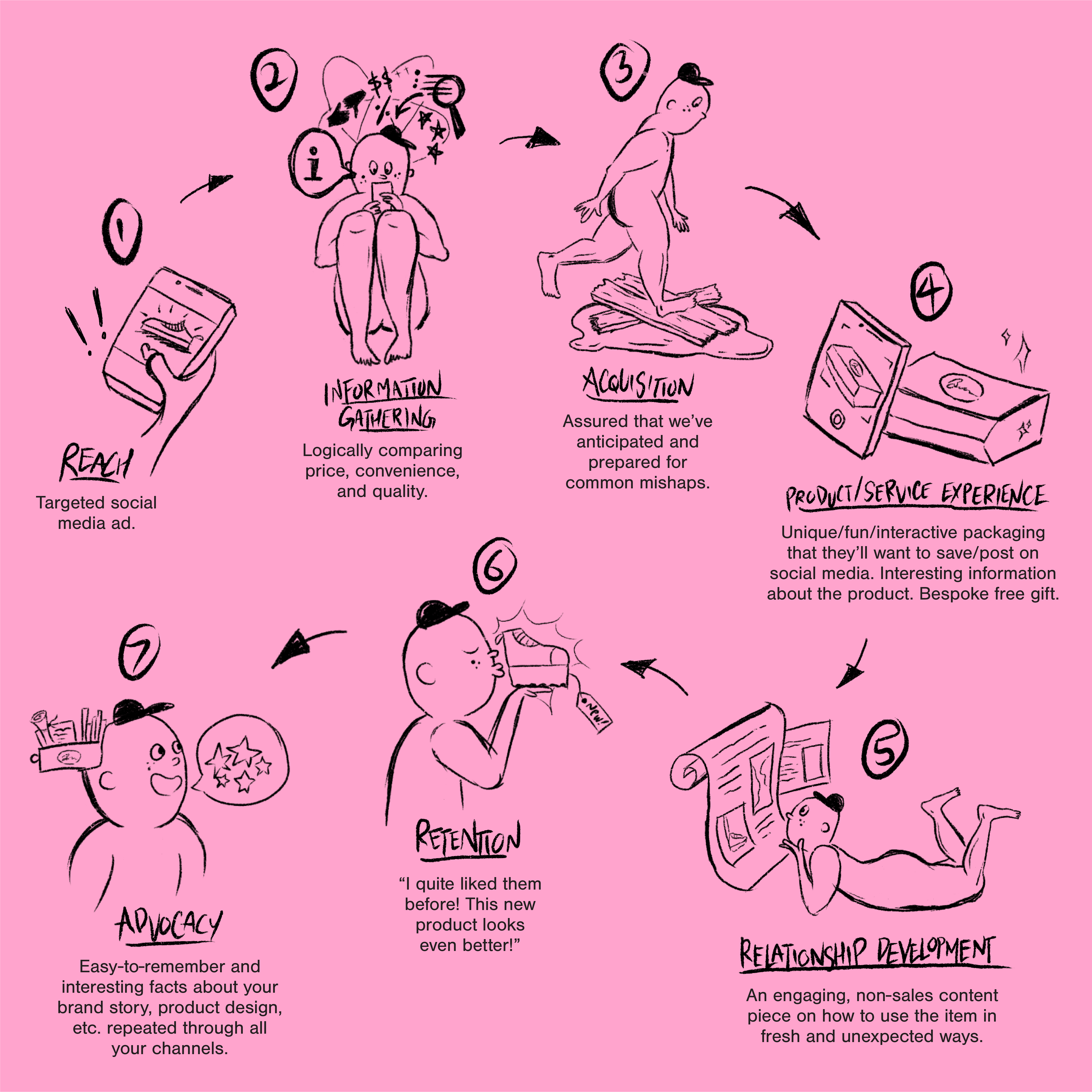In a sea of meaningless
noise, how do you make a lasting connection?
brand communications

©Somewhere Else
In
any interpersonal relationship, effective communication means knowing:
● What To Say
● When To Say It
● How To Say It
Brand Communication is no different. It’s all about getting your authentic message across to customers. It’s what sets you apart from other merely transactional businesses. If you read our previous article, you’ve already solved the first part of the puzzle-- What To Say! In How To Build A Brand, we clarified intentions, analysed context, identified concrete goals, and practiced empathy toward customers. These all help distill a clear vision of your brand, and what kind of message you want to convey.
In this article, we’ll tackle the next two parts of the brand communications puzzle: When To Say It, and How To Say It. When you say the right thing, in the right way, at the right time, something quite special happens… a Moment Of Truth.
What is a Moment Of Truth
For brands, a Moment Of Truth is the instant an emotional connection is formed with the customer. You’re no longer just a random name behind a random product-- you provided a unique and delightful experience that interrupted their otherwise mundane day.
Moments Of Truth can come in many forms. It can occur in product packaging. It can exist in clever ad copy. Or it could come from customer service that goes the extra mile. As customers, we’re left pleasantly surprised, wondering “Who thought this up, and how did they know we’d like it so much?”
How do I know when Moments Of Truth should occur?
For brand managers or internal teams, designing a Moment Of Truth can be tricky. Unless you have a marketing genius on the team, how would you know when to deploy one? For many brands, communications remain stuck in the same old tired game of social media posts, but really, there’s a world of opportunity waiting to be unlocked.
Use a Customer Journey Map to identify where Moments of Truth can exist. The map can be as broad or narrow as you wish. You can map a single customer interaction--for example, the emotional stages of unboxing your product. Or you can cast a wider net, and map the entire customer lifecycle.
![]()
Each stage of the map is an opportunity to design a Moment of Truth that brings out the desired feelings in your customer. If you restrict your map to a single stage (eg: just the unboxing process) you’ll be able to expand on that process until you identify truly bespoke instances in which you can surprise and delight. Try mapping out a customer journey for your own brand! (downloadable blank worksheet here, just keep the headers in bold)
You may have noticed by now that Moments of Truth are rarely overtly sales-oriented. After all, how many of us feel genuine joy when someone’s trying to sell us something? As brand managers or internal teams, how should we design a Moment of Truth that feels authentic, while ALSO leading to sales?
How do I design a Moment of Truth?
Designing an authentic Moment of Truth requires anticipating what the customer wants, often before they realize it themselves, and delivering it smoothly. Think of it as going the extra mile for the customer, in a way that ultimately reinforces your brand. Take into account what you know about yourself, what you know about the other person, and create an encounter that makes you both happy.
If you’ve already talked to some customers, or if you’ve explored a Customer Persona, then you should have a pretty good idea of what your customers respond well to.
But what about getting to know yourself, as a brand? Consider the following:
● Brand Identity
● Brand Personality
● Brand Interests
● Brand Actions
These four factors describe what you know about yourself. As you’re planning this encounter, they set boundaries on what your authentic Moment of Truth should and shouldn’t look like. For example, a high-end, exclusive restaurant could offer to coordinate private transport to and from their location. It would not, on the other hand, sing birthday songs to guests celebrating birthdays.
From the copywriting on your website, to the design of your packaging, to your product line, to the timing of your events-- every choice should seem to naturally relate to the others. The first element, Brand Identity, tends to be quite straightforward; most brand managers will have a cumbersome PDF that lays out the rules of logo usage and brand colours, for example. However, Brand Personality is somewhat trickier to codify.
On a basic level, Brand Personality can be described in the same way we describe people. “Fun”, “sophisticated”, “millennial”, “aspirational” are all common words used by brand managers or branding consultants. But these words are pretty abstract, and can mean different things to different people. To paint a richer picture of your brand personality, try coming up with a Persona for your brand. If your brand was a person, what would they look like? What are some common things they’d say, and do they have a way of talking (this determines your brand’s tone of voice in all your copywriting)? What do they care about? Use this Brand Persona to inform your decisions-- if a Moment of Truth idea seems out-of-character for your Brand Persona, it probably needs some tweaking!
Similarly, Brand Interests inform (and are informed by) your Brand Personality and Identity. Find areas of overlap between you and your customers’ interests. For example, if your brand’s visual design uses graphical elements native to street art, and many of your customers enjoy skateboarding, perhaps graffiti could be a shared interest that you’d explore in your Moment of Truth.
Brand Actions that follow naturally from Brand Interests would include any events, collaborations, community involvement, or R&D that you take up. The more shared themes you can find between your activities and your customers’ activities, the better! By letting your customers know what you’re up to outside of just selling, you form a stronger bond with them that lasts beyond the point of sale.
![]()
Moments of Truth are highly specific to each brand, and highly specific to each customer segment. There’s no one-size-fits all prescription, but the main goal is always to surprise and delight with your thoughtfulness.
How do I turn a Moment of Truth into sales?
The big question on everyone’s mind! The truth is, Moments of Truth exist in the realm of brand-building. They’re the small things you do in a relationship that makes the relationship worth keeping. They’re for brands looking to build a loyal following, and brands who are trying to rise above the soulless game of price competition. Usually these are brands who put great emphasis on word of mouth, and can afford to spend less money on marketing because their devoted customers do the advertising for them. Stories of great service and pleasant surprises spread faster and last longer than news of a flash sale. Think about the brands you love and talk about often, and what they’ve done for you (sometimes for free)!
● What To Say
● When To Say It
● How To Say It
Brand Communication is no different. It’s all about getting your authentic message across to customers. It’s what sets you apart from other merely transactional businesses. If you read our previous article, you’ve already solved the first part of the puzzle-- What To Say! In How To Build A Brand, we clarified intentions, analysed context, identified concrete goals, and practiced empathy toward customers. These all help distill a clear vision of your brand, and what kind of message you want to convey.
In this article, we’ll tackle the next two parts of the brand communications puzzle: When To Say It, and How To Say It. When you say the right thing, in the right way, at the right time, something quite special happens… a Moment Of Truth.
What is a Moment Of Truth
For brands, a Moment Of Truth is the instant an emotional connection is formed with the customer. You’re no longer just a random name behind a random product-- you provided a unique and delightful experience that interrupted their otherwise mundane day.
Moments Of Truth can come in many forms. It can occur in product packaging. It can exist in clever ad copy. Or it could come from customer service that goes the extra mile. As customers, we’re left pleasantly surprised, wondering “Who thought this up, and how did they know we’d like it so much?”
How do I know when Moments Of Truth should occur?
For brand managers or internal teams, designing a Moment Of Truth can be tricky. Unless you have a marketing genius on the team, how would you know when to deploy one? For many brands, communications remain stuck in the same old tired game of social media posts, but really, there’s a world of opportunity waiting to be unlocked.
Use a Customer Journey Map to identify where Moments of Truth can exist. The map can be as broad or narrow as you wish. You can map a single customer interaction--for example, the emotional stages of unboxing your product. Or you can cast a wider net, and map the entire customer lifecycle.

Each stage of the map is an opportunity to design a Moment of Truth that brings out the desired feelings in your customer. If you restrict your map to a single stage (eg: just the unboxing process) you’ll be able to expand on that process until you identify truly bespoke instances in which you can surprise and delight. Try mapping out a customer journey for your own brand! (downloadable blank worksheet here, just keep the headers in bold)
You may have noticed by now that Moments of Truth are rarely overtly sales-oriented. After all, how many of us feel genuine joy when someone’s trying to sell us something? As brand managers or internal teams, how should we design a Moment of Truth that feels authentic, while ALSO leading to sales?
How do I design a Moment of Truth?
Designing an authentic Moment of Truth requires anticipating what the customer wants, often before they realize it themselves, and delivering it smoothly. Think of it as going the extra mile for the customer, in a way that ultimately reinforces your brand. Take into account what you know about yourself, what you know about the other person, and create an encounter that makes you both happy.
If you’ve already talked to some customers, or if you’ve explored a Customer Persona, then you should have a pretty good idea of what your customers respond well to.
But what about getting to know yourself, as a brand? Consider the following:
● Brand Identity
● Brand Personality
● Brand Interests
● Brand Actions
These four factors describe what you know about yourself. As you’re planning this encounter, they set boundaries on what your authentic Moment of Truth should and shouldn’t look like. For example, a high-end, exclusive restaurant could offer to coordinate private transport to and from their location. It would not, on the other hand, sing birthday songs to guests celebrating birthdays.
From the copywriting on your website, to the design of your packaging, to your product line, to the timing of your events-- every choice should seem to naturally relate to the others. The first element, Brand Identity, tends to be quite straightforward; most brand managers will have a cumbersome PDF that lays out the rules of logo usage and brand colours, for example. However, Brand Personality is somewhat trickier to codify.
On a basic level, Brand Personality can be described in the same way we describe people. “Fun”, “sophisticated”, “millennial”, “aspirational” are all common words used by brand managers or branding consultants. But these words are pretty abstract, and can mean different things to different people. To paint a richer picture of your brand personality, try coming up with a Persona for your brand. If your brand was a person, what would they look like? What are some common things they’d say, and do they have a way of talking (this determines your brand’s tone of voice in all your copywriting)? What do they care about? Use this Brand Persona to inform your decisions-- if a Moment of Truth idea seems out-of-character for your Brand Persona, it probably needs some tweaking!
Similarly, Brand Interests inform (and are informed by) your Brand Personality and Identity. Find areas of overlap between you and your customers’ interests. For example, if your brand’s visual design uses graphical elements native to street art, and many of your customers enjoy skateboarding, perhaps graffiti could be a shared interest that you’d explore in your Moment of Truth.
Brand Actions that follow naturally from Brand Interests would include any events, collaborations, community involvement, or R&D that you take up. The more shared themes you can find between your activities and your customers’ activities, the better! By letting your customers know what you’re up to outside of just selling, you form a stronger bond with them that lasts beyond the point of sale.

Moments of Truth are highly specific to each brand, and highly specific to each customer segment. There’s no one-size-fits all prescription, but the main goal is always to surprise and delight with your thoughtfulness.
How do I turn a Moment of Truth into sales?
The big question on everyone’s mind! The truth is, Moments of Truth exist in the realm of brand-building. They’re the small things you do in a relationship that makes the relationship worth keeping. They’re for brands looking to build a loyal following, and brands who are trying to rise above the soulless game of price competition. Usually these are brands who put great emphasis on word of mouth, and can afford to spend less money on marketing because their devoted customers do the advertising for them. Stories of great service and pleasant surprises spread faster and last longer than news of a flash sale. Think about the brands you love and talk about often, and what they’ve done for you (sometimes for free)!
This kit contains DIY branding solutions, customisable to your pace and
budget. Alternatively, request backup.
contact us︎
contact us︎




